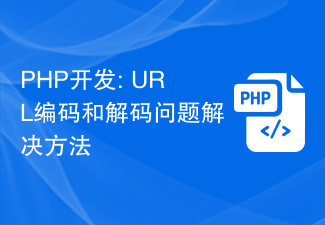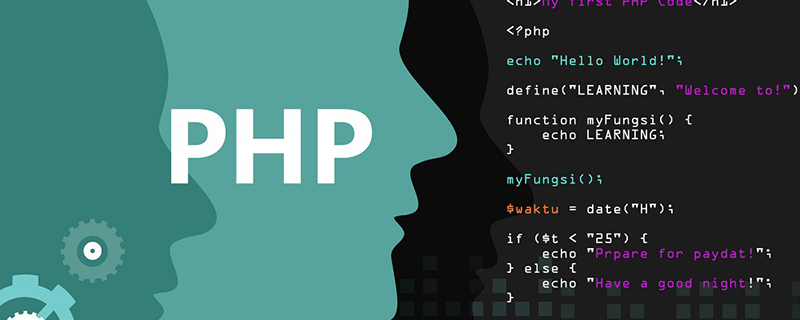
Course1373
Course Introduction:Django DRF source code analysis includes: 1 Front-end and back-end separation mode 2 restful interface specification 3 Simple applications of CBV 4 Object-oriented and reflection supplement 5 CBV source code analysis 6 CBV source code analysis 2 7 APIView source code analysis 8 Serialization and deserialization of DRF 9 Supplementary information on the use of serializers 10 Serializer save operation 11 Interface implementation based on APIView 12 save method completes updating data 13 ModelSerializer 14GenericAPIView 15GenericAPIView(2) 16 min mixed class 17 Re-encapsulation of Minin mixed classes 18ViewSet 19 ModelViewSet 20 routing components

Course2528
Course Introduction:If you have any questions, add WeChat: Le-studyg; in the course, we will first understand the background and characteristics of the PHP language, as well as the role and working principle of the PHP interpreter. Next, we will analyze the core components of the PHP interpreter in detail, such as lexical analysis, syntax analysis, virtual machine, etc., and gain an in-depth understanding of its internal implementation mechanism. In addition, the course will also introduce how to use C language to write various modules of the PHP interpreter, including lexical analyzer, syntax analyzer, virtual machine, etc. Through practical projects, students will personally implement a simple PHP interpreter and deepen their understanding of the PHP interpreter source code. Through the study of this course, students will be able to deeply understand the working principle and internal implementation mechanism of the PHP interpreter, and master the methods and techniques of writing PHP interpreters using C language. At the same time, students will also develop their ability to analyze and solve problems, and improve their programming skills and project practice capabilities. Whether you are a beginner who is interested in the PHP language or a developer who wants to have a deeper understanding of the internal mechanisms of the PHP interpreter, this course will provide you with valuable experience and inspiration. Let us explore the mysteries of the PHP interpreter and start the programming journey!

Course2857
Course Introduction:Course introduction: 1. Cross-domain processing, token management, route interception; 2. Real interface debugging, API layer encapsulation; 3. Secondary encapsulation of Echarts and paging components; 4. Vue packaging optimization and answers to common problems.

Course1795
Course Introduction:Apipost is an API R&D collaboration platform that integrates API design, API debugging, API documentation, and automated testing. It supports grpc, http, websocket, socketio, and socketjs type interface debugging, and supports privatized deployment. Before formally learning ApiPost, you must understand some related concepts, development models, and professional terminology. Apipost official website: https://www.apipost.cn

Course5521
Course Introduction:(Consult WeChat: phpcn01) The comprehensive practical course aims to consolidate the learning results of the first two stages, achieve flexible application of front-end and PHP core knowledge points, complete your own projects through practical training, and provide guidance on online implementation. Comprehensive practical key practical courses include: social e-commerce system backend development, product management, payment/order management, customer management, distribution/coupon system design, the entire WeChat/Alipay payment process, Alibaba Cloud/Pagoda operation and maintenance, and project online operation. .....
Stream data from OpenAI's API using AJAX, PHP, and server-sent events
2023-11-11 12:03:23 0 1 497
2023-11-09 23:58:07 0 1 311
How to solve /opt/lampp/bin/mysql.server: line 261: log_success_msg: command not found
2023-11-08 08:46:06 0 1 263
What is the difference between "yarn service" and "yarn start" and "yarn build"
2023-11-02 21:07:12 0 1 283
CSS scope custom properties are not recognized when used to evaluate variables in the parent scope
2023-11-01 21:53:10 0 1 180

Course Introduction:Solution to php base64 decoding garbled characters: 1. Replace the minus sign "-" in the string to be decoded with a plus sign "+"; 2. Replace the underscore "_" in the string to be decoded with a slash "/" .
2021-03-26 comment 02911

Course Introduction:PHP is a widely used server-side scripting language that can be used to develop dynamic websites and web applications. One of the important functions is string encoding and decoding. When programming in PHP, we often need to encode and decode strings, such as converting Chinese characters in the URL to UTF-8 encoding before transmitting; or converting Unicode-encoded strings into readable text. . PHP provides many functions that can help us perform string encoding and decoding operations. Here are some common
2023-04-19 comment 0322

Course Introduction:URL encoding and decoding is a common problem during PHP development. URL encoding is to ensure that special characters in the URL are transmitted and parsed correctly, while URL decoding is to parse the encoded URL into a readable form. This article will introduce how to solve URL encoding and decoding problems in PHP. In PHP, URL encoding and decoding operations can be easily performed by using the built-in urlencode() and urldecode() functions. URL encoding URL encoding is to convert all non-words in the URL
2023-06-30 comment 01216

Course Introduction:Hardware decoding is smooth. Detailed introduction: In general, software decoding and hardware decoding each have their own advantages and disadvantages. Which decoding method to choose needs to be weighed and selected according to the specific equipment and application conditions. In most cases, considering the advantages and disadvantages of both, choosing an appropriate decoding method to balance performance, efficiency and compatibility is the best way.
2023-11-27 comment 0554

Course Introduction:The solution to decoding garbled characters after PHP base64 encoding: When passing in GET form, just prevent the [+] sign from being replaced with a space. The code is [$str = base64_decode(str_replace(" ","+",$_GET['str ']))].
2020-07-13 comment 04698